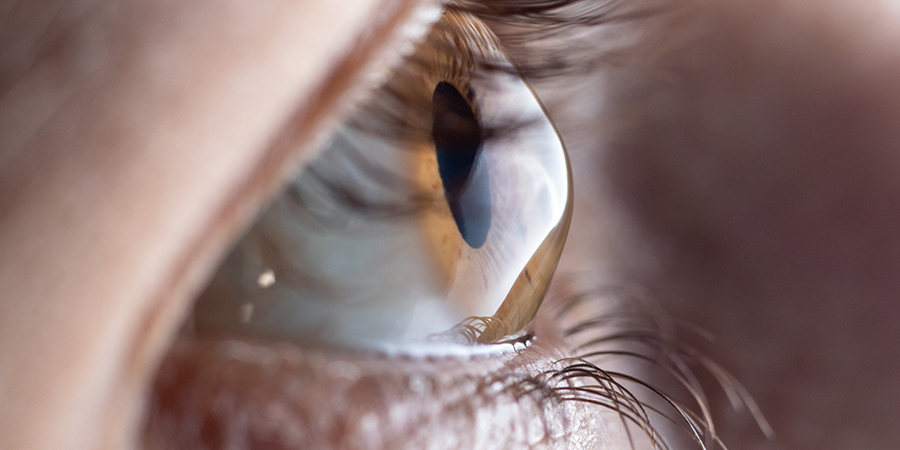
The cornea is the portion of your eye that constitutes the windshield or clear outer coat. Sometimes the cornea fails to hold its shape. This leads the cornea to bulge outwards, sort of like a cone. This condition is called keratoconus.
The protein fibers, called collagen, are responsible for holding the cornea of the eye in its position. The weakening of these protein fibers prevents them from holding the shape of the cornea. Thus, the cornea progressively becomes more cone-like.

Cause of keratoconus
Although the cause of keratoconus is not clearly known, according to researchers, some people are genetically inclined to get keratoconus. The lack of protective antioxidants in one’s cornea causes the production of harmful byproducts. These harmful byproducts in turn impact the collagen fibers in the cornea due to the absence or low concentration of antioxidants. Thus, the cornea weakens. This leads to bulging.
Correlates of keratoconus
Although the cause of keratoconus is not known clearly, certain links have been discovered to keratoconus, including:
- Age (usually begins at teenage)
- Family history
- Certain disorders like retinitis pigmentosa, osteogenesis imperfecta, Down syndrome, and Ehlers-Danlos syndrome.
- Inflammation from atopic eye disease, asthma, allergies, etc.
- Eye rubbing
- Race (Latinos and black individuals are more prone to keratoconus)

Symptoms of keratoconus
The symptoms include:
- Light streaks
- Ghost images
- Blurring of vision
- Seeing bright lights with halos around them.

How is keratoconus diagnosed?
To successfully diagnose someone with keratoconus, the cornea shape has to be measured by an eye specialist. This is done through corneal topography. A photo is taken of your cornea by a doctor and that image is assessed.
Keratoconus treatment
The first line of treatment for keratoconus, especially a mild case, is the prescription of new eyeglasses. If that doesn’t work, then doctors prescribe contact lenses. The contact lens that is usually prescribed for keratoconus is rigid gas permeable contacts. Other treatments aimed at strengthening your cornea such as cornea collagen crosslinking are often used. The last resort is opting for a cornea transplant.
It is important to get regular eye examinations for a condition like keratoconus as it can lead to nearsightedness and/or astigmatism. Consult an eye specialist or doctor for the same.
